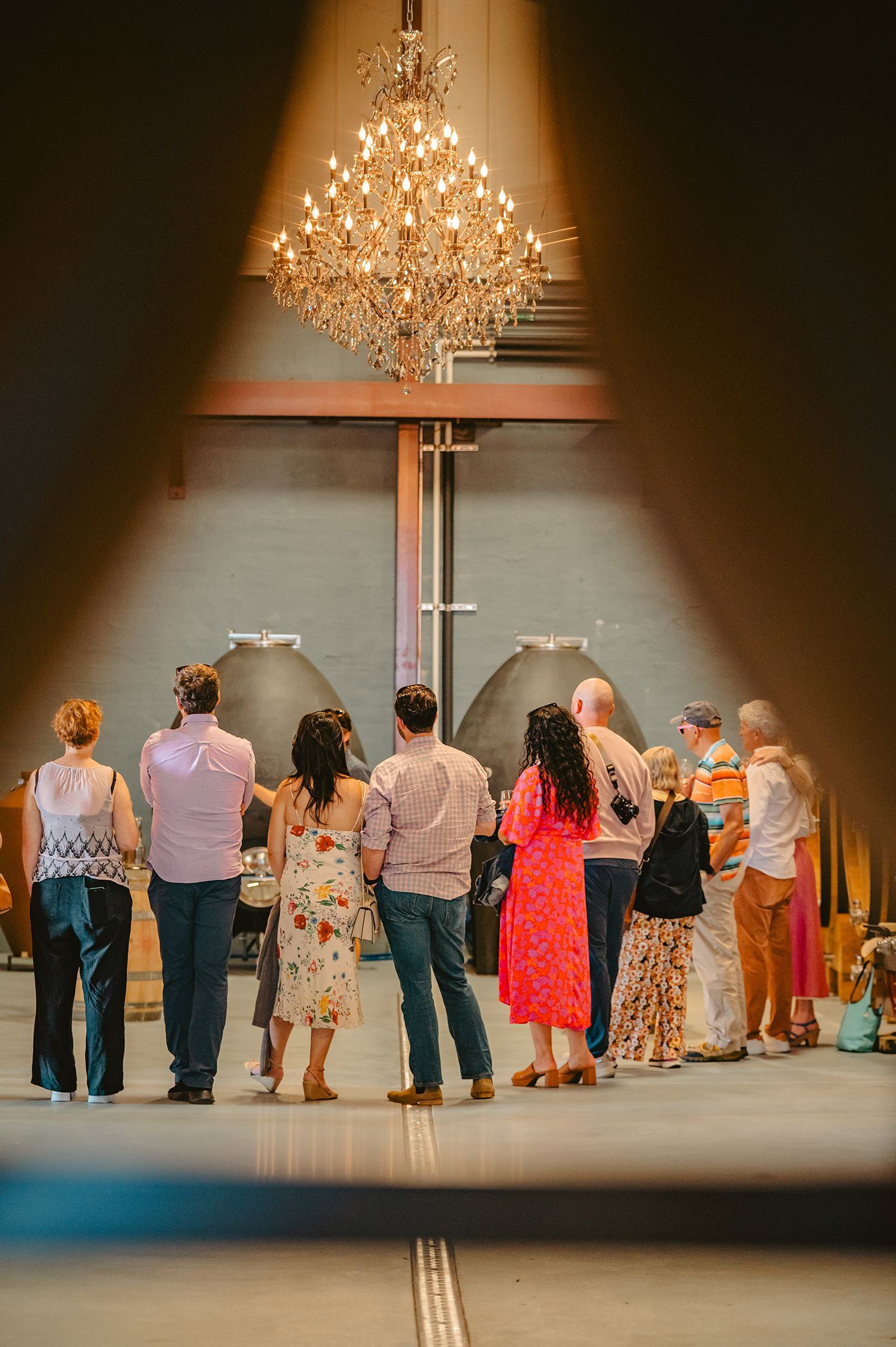A trip to wine country is always a good idea—but there’s something about the crisp air and harvest season that makes fall a particularly good time to do so. At its core, a trip to Napa Valley or an under-the-radar region seems relatively straightforward: Enjoy a glass of wine (or two) and explore each pour’s unique notes and nuances. But in reality? There are some missteps that can turn a tasting from a toast-worthy experience to a total fumble. Don’t worry: With the right know-how, these boozy blunders are completely avoidable. To help, two insiders share the biggest wine-tasting mistakes—and what you should do instead.
Seth Daniel
Mistake #1 : Sporting Superfluous Scents
From smelling the layered aromas, to taking a sip (or two), to ogling the gorgeous spaces, wine tasting is a multi-sensory experience. So why not arrive at the vineyard as a blank canvas? “The most critical error is wearing perfume or cologne, wearing fragrant deodorant or fragrant hair products when tasting wines,” explains Angelina Mondavi, fourth-generation co-proprietress and consulting winemaker for Charles Krug Winery. “All of this actually can mask the delicate aromatics the wine may be presenting if one’s nose is not used to smelling wine.” While you’re at it, you might want to steer clear of pungent food before your reservation. Though delicious, garlic, stinky cheeses, or anything spicy might wreak havoc on your palate.
Mistake #2: Improper Tasting Protocol
Vineyards welcome experienced and beginner tasting alike, but some missteps are dead giveaways that it’s your first time in wine country. For starters, Mondavi says do not swirl your glass immediately after someone pours vino inside. “Place your nose in the glass and smell the wine,” she says. “When you swirl before smelling, you may lose delicate aromatics and esters which you can not keep in the glass.” Once you’ve gotten a whiff of your wine, you’re free to swirl and taste.
While you can take note of the aromas and color, don’t fall into one of those classic “rookie” tropes. For example, Chris Kajani, president winemaker at Bouchaine Vineyards, says “obsessing over the ‘legs’ dripping down the glass like it’s a weather forecast” is a telltale sign of amateur status.
For an optimal tasting experience, Mondavi recommends holding your glass by the stem so your hands don’t heat the wine. Once it’s time for your next pour, Mondai says refrain from rinsing your glass with water. “It will mute the flavors of the wine, and water it down,” she says. “Instead, rinse with a splash of the upcoming wine you may be tasting.”

Seth Daniel
Mistake #3 : Chugging Wine
Unless you live in close proximity to wine country, you’ll want to pack as much as you can into your trip. But remember: Tasting is a marathon, not a sprint. “Please—for the love of pinot—spit occasionally,” Kajani stresses. “Tasting room marathons sound fun until you are sideways after the third winery.”
For Yannick Girardo, managing partner at Seven Apart Winery, two tastings per day is the sweet spot.
“Chances are that anyone who will be hosting a group on their third or fourth experience will be doing a lot of hand holding and the guest may not be attentive,” he says. “Hosts might not even pour them a drop of wine in order to avoid putting someone at further risk.”
For the ultimate schedule, Girardo recommends doing one taste in the late morning, breaking for a booze-free bite, and a final afternoon tasting. “It provides the guests a better experience without creating any rush or stress and it will allow whoever is hosting them to interact with guests in a better way,” he says.
Regardless of how many wineries you visit, hydration is key. “For every glass of wine, you should be drinking a glass of water to keep your body hydrated and prevent feeling sluggish that day or the next morning,” Mondavi says.
Mistake #4 : Ignoring Your Palate
Just because a bottle of wine comes with a three-figure price tag doesn’t mean you’re going to love it. In fact, Kajani says one of the biggest (and most common) mistakes is ignoring your palate. “You don’t need anyone else’s blessing to love what you love,” Kajani says. “Is your palate doing a happy dance? Then it’s a great wine.” Instead, she encourages you to drink what you enjoy. “Wine tasting isn’t a performance: It’s an adventure,” Kajani adds. “Ask questions, say what you actually taste—even if it’s “gummy bears and garden hose”—and enjoy the ride.” Now that’s a tip worth toasting to.


